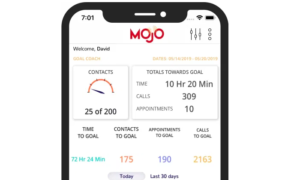What’s in this article:
- EY discovered that every shopper hoping to “get back to normal” has a remarkably different vision of what normal looks like
- The global assurance firm sees five groups emerge that will define consumer priorities for 2021 and beyond – which can be used as cohorts for your marketing strategy
- Brands should expect shopper priorities to fall within the categories of affordability, health, community, the environment, and experiences
As we all know, 2020 was a tumultuous year that shattered everyone’s sense of normalcy — but what comes next? This question is one that global assurance firm EY is trying to answer with its latest Future Consumer Index. By analyzing spending intentions since the pandemic began, EY discovered that every shopper hoping to “get back to normal” has a remarkably different vision of what normal looks like.
As a result, EY sees five groups emerge that will define consumer priorities for 2021 and beyond. As marketers, we can treat them as cohorts and use their perspectives to inform our 2021 strategy.
Become the best CRMer you can:
CRM Hack: Monitoring the User’s Heartbeat
What Does It Mean to Treat a Customer’s Email With Respect?
To Lock or Not to Lock Customers (into CRM Journeys)
What the Efforts to Promote Responsible Gaming Look Like Form the Inside
Affordability first
The largest cohort within EY’s research — representing 30% of consumers — is dubbed “affordability first.” These customers are deal-focused, avoid unnecessary purchases, and generally keep their expenses low. Most belong to older demographics, work in low-income jobs, and tend to be highly pessimistic about short-term COVID recovery.
In terms of shopping habits, affordability-first consumers care about one thing — functionality. They aren’t particularly loyal to brands, but they’re always on the lookout for products that operate as advertised. Offering a superior product for a high-value price is usually the quickest way to get their attention.
Health first
Our next segment is “health first,” which represents 26% of consumers. As the name implies, this cohort emphasizes personal and familial health. Wherever possible, these customers will shop with safe and trusted brands to minimize risk. They also tend to shop online during the COVID-19 pandemic, but more for safety concerns than convenience.
This segment is likely to have lasting impacts on consumer shopping behavior in the immediate future. For example, 59% of respondents claim they changed their values and overall outlook during COVID-19. Approximately 57% intentionally seek out products for their health benefits. A high proportion of health first consumers currently live with their families and consider their health while making purchases.

Planet first
Scaling up from health benefits is the “planet first” segment, making up 17% of respondents. This cohort is highly conscious of the ways consumption choices shape the world around them. Planet-first consumers will gladly pay more for sustainable and ethically sourced products, particularly those from local or independent businesses.
While planet-first shoppers represent the third-largest tier, they are also surprisingly diverse. Their demographic makeup is evenly spread across age, income, and culture, often united by a desire to reduce their environmental footprint. Small brands that can effectively communicate the value of sustainability have an excellent opportunity to grow an audience moving forward.
Society first
Where health first prioritizes individual and family units, the “society first” cohort prioritizes community ethics. Representing 16% of consumers, this segment considers the social impact of purchasing decisions on small and large scales. Brands must earn their trust before any purchase occurs, and they expect fully transparent communications on day-to-day operations. On the other hand, businesses that genuinely put people before profits will earn loyal customers from this group.
Society-first consumers are typically urban and highly educated. Many are in comfortable financial positions, although they currently believe this is because COVID-19 limits their spending options. Naturally, they will pay a premium price for brands that align with their social values.
Experience first
Our final segment, “experience first,” is all about living for the moment. When it comes to personal health and finances, they are the least anxious cohort and experienced little change during the COVID-19 pandemic. Their priority — as the name suggests — is to try new experiences. New products and services are attractive to this segment, especially when brands can personalize them in some way. Approximately 50% of these shoppers come from millennial and Gen Z age groups.
In many ways, experience-first customers already live in the “normal” world, happily visiting malls, and restaurants. Unfortunately, they are increasingly difficult to target — the segment only makes up 11% of consumers, and their wants are constantly in flux. Brands that can offer personalized ad experiences in what EY calls the “micro-moment” will gain the most value from this group.
As our societies come to grips with a post-COVID world, these cohorts will likely change further. In the short term, however, marketers should expect shopper priorities to fall within the categories of affordability, health, community, the environment, and experiences. Brands that communicate to these needs will be well-positioned for success in whatever our new normal looks like.
The post The 5 Consumer Cohorts That Matter Most in 2021 appeared first on Post Funnel.




